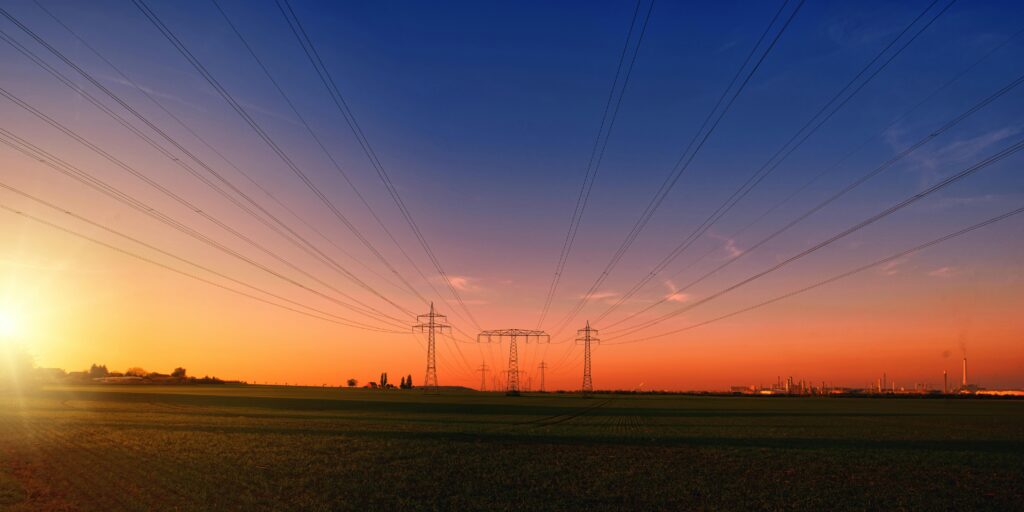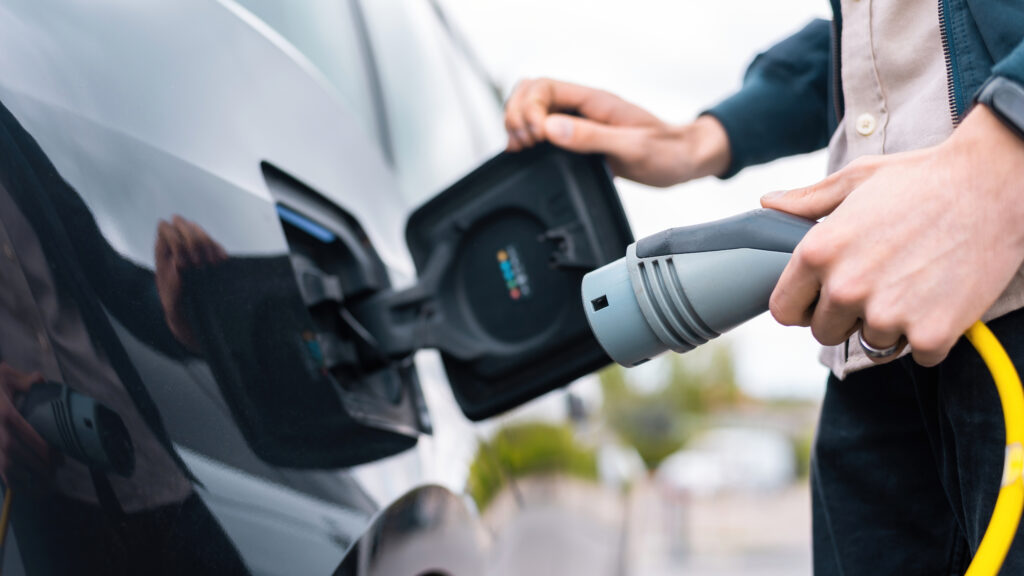
In this edition of V2G News, we explore both the potential value and consumer perceptions of bidirectional charging. The second installment in our V2G Value series breaks down how V2G delivers benefits—from behind-the-meter savings to grid services—while What Consumers Really Think About V2G highlights consumer research showing that, despite clear system value, many drivers remain cautious about costs, risks, and rewards. Together, these insights underscore the challenge of turning V2G’s benefits into customer confidence and adoption.
Rounding things out, don’t miss Steve’s top picks for news and happenings in the V2G space!

V2G Insights
Making Sense of V2G Benefits: A Framework for Understanding Grid Value

This article is the second installment in our V2G Value Series. The first focused on benefits beyond the grid—household resilience (e.g., V2H backup) and lowering the total cost of EV ownership. Here, we map grid-facing value into three categories: behind‑the‑meter optimization, avoided cost-based programs, and market participation.
Three-Part Framework for V2G Value
As interest in vehicle-to-grid (V2G) and bidirectional charging continues to grow, one of the persistent challenges is explaining exactly where the value comes from. Stakeholders often talk past one another because “value” can mean very different things depending on perspective. For regulators and utilities, it may be about avoided costs or market efficiencies. For customers, it’s often about managing their energy bills.
To clarify the discussion, it’s useful to organize V2G grid value into three categories: behind-the-meter optimization, programs based on administratively set avoided costs, and market participation (see table below). Each plays a role in shaping the future of V2G, though they vary widely in consumer accessibility and alignment with system needs. For regulators, such a framework is critical to ensure that value streams can be stacked without the risk of double compensation — a necessary step to accelerate approval and scaling of V2G programs.

V2G Intelligence
What Consumers Really Think About V2G?

Escalent’s 2023 EVForward survey shows strong curiosity but big education and cost hurdles for V2G adoption.1
Escalent’s 2023 EVForwardⓇ Charging Experience DeepDive remains one of the only sources of consumer-focused research on bidirectional charging (V2X).2 The study provides rare insight into how potential EV buyers perceive technologies like vehicle-to-grid (V2G), vehicle-to-home (V2H), and vehicle-to-load (V2L). Despite rapid progress in V2G technology and pilots since 2023, this report highlights enduring challenges—particularly the low consumer awareness and understanding of these capabilities.
Awareness Gap
The research found that a majority of respondents had never heard of V2G or vehicle-to-vehicle (V2V) capabilities, and only about one in five were somewhat or very familiar. V2H and V2L scored slightly better but still reflected limited recognition. This demonstrates that while industry discussions have advanced, consumer awareness remains a major barrier.
Consumers who engaged with the concept saw V2H as a potential backup power source during outages and V2G as a way to earn money. However, concerns dominated: battery wear, equipment costs, loss of driving range, and skepticism about whether utilities would pay enough. Many also admitted they did not understand how the technology would work, underscoring the education gap.
- V2G News obtained a complimentary copy of the report that is only available to Escalent’s paid clients in the automotive and energy sectors. Findings are based on Escalent’s 2023 EVForward™ Charging Experience DeepDive survey (n=1,313), which included 108 EV Owners, 340 EV Intenders, 463 EV Open, and 402 EV Resistant respondents, supplemented by 12 focus group participants.
- See Escalent Market Research, Long Road Ahead for Vehicle-to-Everything (V2X) Adoption available at https://escalent.co/blog/long-road-ahead-for-vehicle-to-everything-v2x-adoption/ and Escalent Market Research, EVForward Research available at https://escalent.co/industries/automotive-and-mobility/evforward/.

V2G Finds
Nuvve Provides Second Quarter 2025 Financial Update
Nuvve’s Q2 2025 filing underscores both the challenges of scaling vehicle-to-grid (V2G) and the important steps the company is taking to strengthen its position. Quarterly revenue came in at $0.33 million, reflecting a 59% year-over-year decline, while operating losses widened to $14.8 million. Management acknowledged that Nuvve remains in the early stages of commercialization and will continue to incur losses until its GIVe platform achieves greater scale.
Even so, the company reported a $19.1 million backlog, anchored by a major EV infrastructure project in Fresno, and moved quickly to bolster liquidity with a $5.5 million equity raise in July. Strategic actions this quarter included acquiring Fermata Energy’s assets—expanding its technology portfolio—and establishing a New Mexico subsidiary to support growth in new markets. These moves point to a company that is consolidating expertise and positioning itself for the next phase of V2G deployment.
8/14/2025
California Pushes EVs Beyond Driving: Bidirectional Charging Seen as Critical Grid Resource
California’s August 2025 report to Governor Newsom, issued in response to his Executive Order on ZEV deployment, makes clear that the state sees bidirectional charging and V2G as essential to the clean energy transition. The recommendations call for enabling EVs to export power to the grid, support homes and businesses during outages, and provide backup power during peak demand. Agencies urge adoption of dynamic electricity rates, charger standards to guarantee V2G capability, and incentives for automakers to build vehicles with bidirectional functionality. While managed charging (V1G) remains part of the plan, the report’s emphasis signals that California is moving beyond load management — framing V2G as a critical grid resource and a consumer value proposition
8/19/2025
Kia Begins EV4 Production in Europe with V2L & V2G Capabilities
Kia has begun production of the EV4 at its upgraded Žilina plant in Slovakia, introducing a fully electric hatchback built on the E-GMP platform and designed for European drivers. Beyond its long range and sleek design, the EV4 stands out for its bidirectional charging capabilities—offering both Vehicle-to-Load (V2L) for powering devices and appliances, and Vehicle-to-Grid (V2G) functionality, enabling drivers to support the grid and potentially earn revenue where programs are available. With these features, Kia positions the EV4 not just as a car, but as a flexible energy resource aligned with Europe’s clean energy goals.
8/21/2025
A V2G-ready EV could earn $10,000 in 10 years, says Jeff Dahn
This new evidence from Jeff Dahn and Ampere’s real-world V2G trials shows the technology is not just theoretical—it’s working today and delivering meaningful financial returns for drivers. With minimal impact on battery life, participants earned hundreds of dollars annually by allowing their EVs to store and discharge energy in response to grid needs. Dahn’s analysis highlights how quickly this value could scale: one million V2G-enabled EVs could provide a terawatt-hour of flexible energy annually. These findings reinforce the themes explored in the feature article in this edition of V2G News on V2G Value—that while customer savings, system benefits, and market alignment each carry trade-offs, practical demonstrations like Ampere’s are proving that V2G can unlock all three value streams at once, bridging customer incentives with broader grid resilience and decarbonization goals.
8/21/2025
PG&E and The Mobility House Announce Commissioning of California’s Vehicle-to-Grid Electric School Bus Fleet with Fremont Unified School District
Pacific Gas and Electric (PG&E), Fremont Unified School District, and The Mobility House have commissioned one of California’s most advanced vehicle-to-grid (V2G) electric school bus fleets. Supported by six high-power bidirectional chargers and The Mobility House’s ChargePilot platform, the 14-bus fleet can now export energy to the grid under PG&E’s Emergency Load Reduction Program, turning buses into flexible grid assets. The project, backed by the California Energy Commission’s Replicable Vehicle-to-X Deployment Study, includes major infrastructure upgrades and builds on PG&E’s earlier V2X pilots—demonstrating how school districts can cut emissions, lower costs, and enhance grid reliability with V2G technology.
8/14/2025